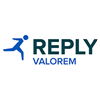We’ve all seen the amazing third-person captures of Microsoft HoloLens experiences, which Microsoft has demonstrated at their live events, and in their marketing videos. Now, you can create the same high-quality mixed reality captures using your own DSLR camera, Microsoft’s HoloLens device hardware, and Valorem’s Mixed Reality Observer (MiRO) capture solution.
“Valorem’s Immersive Experiences Team has been hard at work developing a HoloLens device accessory and application offering based on Microsoft’s spectator view open source solution, which Microsoft is sharing publicly today. We’re thrilled to be the first agency partner to utilize the spectator view technology as inspiration for developing our own commercial solution, which we’ve dubbed MiRO (Mixed Reality Observer). Like the spectator view solution, MiRO allows HoloLens device owners to create high-definition mixed reality photos and videos, with unsurpassed ease. Having early access to the spectator view source code solution, along with the 3D CAD models we used to 3D print the HoloLens DSLR mounting brackets, significantly accelerated our team’s development efforts. We’re very pleased to be a HoloLens Agency Partner, and helping to drive further adoption of the Microsoft HoloLens platform through unique solution offerings like MiRO.” – Mark Brown, SVP Research & Incubation


How will you use MiRO to exponentially enhance your HoloLens experiences?
- Create high-quality third-person photo and video captures of your HoloLens app experiences to publish on your Windows Store page, web site, or other social media channels.
- Share your HoloLens application experiences to a live audience or stream over the Internet.
- Extend your applications so others can participate in your mixed reality experiences without needing to wear HoloLens device hardware.
- Capture mixed reality usability tests and application defects for sharing back to your designers and developers.
Rene Schulte, Director of Global Innovation, describes how MiRO works, "HoloLens is mounted together with the DSLR camera and the signals of both are sent to a PC where the actual scene rendering is performed based on the tracking data provided by the HoloLens. A special compositor PC card and Valorem's composition software combine the DSLR video signal and the holographic rendering to produce the final video on the PC."
